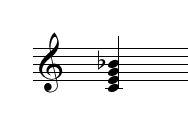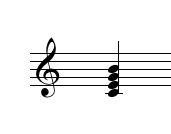I was intending to write about the opening of the Mozart Wind Quintet, which I played at Marlboro... and I got stopped by a metaphor. "Opening" means "beginning;" in this case I am using a synonym (constant, careless expedient of writing) to refer to the piece's slow, magnificent introduction. But: "opening" like the opening/raising of the curtain at the beginning of an opera, of an entertainment? I posit this equivalence of spatial (curtain going up) and temporal (first moments of anything) without any hesitation; it is an accepted currency exchange. But how is this moment of the piece like other openings--like, say, the lifting of the lid of a box to see what lies inside; or, the opening of a flower; or, to use a metaphor given me by Anner Bylsma post-concert, the cracking open of a walnut? In each case, something is revealed, which was initially concealed; we have to "get at" the main thing, which is behind the opening (opening as looking for a thing, opening as action, opening as layer/obstruction which must be pulled aside). Again, these are spatial constructions, seemingly separate from music, where tones dance in their so-called abstract space: how can one moment in music be "behind" another, in the way that the opera's set lies behind the curtain? It would seem that every moment in music comes "after" the previous (not behind)... in a row, in order... if we were to be literal. But I think every listener feels at some point that some moment in a piece is a core, a kernel, a revealed, lurking truth (it's out of order, from another place). And I am speaking not just of goals or climaxes, which are the obvious cores and kernels, but also the secret, random, quiet moments, parenthetical turns of phrase from which other things radiate (another spatial, physical metaphor).
Schenkerian analysis seems to address this spatial possibility of music by proposing levels: background, middleground, foreground. Music has deeper and more surface levels, like a cave! But the background in the Schenker view is almost always the same, the deepest level is the unfolding of a triad, of a single chord. It is true that very often phrases seem to reveal harmonic frameworks; I will concede that this may be, in fact, the purest, least metaphorical way of expressing what phrases reveal (as they open, unfold, show). But I cannot resign myself to that; for me this prioritization is too meticulous, systematic. Sometimes, I think, phrases reveal quirks, they reveal not the central thing but the detail; I have a more "literary" view of these levels. Each phrase of music pulls back, opens, to reveal its own rounding, its own completion... (or lack thereof) ... which may happen with a flourish, or merely "by the way," or any number of ways. A single word may outweigh the grammar of the whole.
The Mozart Quintet begins with the "usual" suspects--strong chords outlining our main characters--

Tonic, dominant, tonic. I, V, I. I resolve, therefore I am. But these three pillars, announcing the bold opening curtain, seem to exist to reveal this quiet, intense, compressed phrase in the piano, this little powerful truth--

--which one feels barely has time to express itself before the demands of the next phrase weigh in. "I am opening" the first chords say, and the piano says what is behind the curtain, the intensities hidden in the tonal world.
The focus of this little phrase is a seventh chord. (Avid readers may notice a similarity to the seventh chord at the center of the passage in E major I cited a ways back as being played in a rather amazing manner by Mitsuko Uchida.) A digression on seventh chords: consider this linchpin of Western tonality:

The dominant seventh chord (seen above, bar 2 of the Mozart Quintet, opening curtains). As posed in this example it is poised to resolve to F major, perfectly, with no loose ends. But if you take the third of this chord, and shift it down a half-step, you have something quite different:

Now there are loose ends, there is no one-step resolution... (there is no simple solution)... the chord is more free-floating. So, too, if you raise the seventh of the chord a half-step:

These two, more complicated, seventh chords are part of a larger group, a species... Allow me a little oversimplification, musician friends, starting now! I feel like they (these kinds of seventh chords) live most naturally, freely, decadently (like Gauguin in Tahiti, say) in French music of the late 19th century, for some reason, though of course they appear very often in Mozart, Bach, whatever. But French music tends to savor these seventh chords, or let them savor themselves, as sound. They lounge nude in the flora of romantic French excess. In this classical German music they live a less easy existence; they need to be "resolved," intellectually dealt with... against the three enlightened, classical, clarity-obsessed chords of the opening of the Wind Quintet the seventh chord in the piano is a dangerous blurring, a sensual transgression. I have observed this many times... which is why I feel justified rambling on at length about it here!
[To cite another instance: at the opening of Beethoven Op. 111 (brutal, intellectual, obsessive first movement), we have a couple of shocking diminished seventh chords which, despite their radical appearance, resolve relatively easily (dim 7th, V, I)... but the third time the phrase departs, and the pivotal moment of this departure is one of these seventh chords--E-flat, G-flat, B-flat, D-flat--neither here nor there, not resolvable with ease, promising a long untanglement, which indeed is what happens.]
All this just to answer a child's question: Why, oh why, is the opening of the Mozart Wind Quintet so incredible? And the recurring refrain for me, some inevitable part of the answer, has to do with these seventh chords, the ascending sequences based on seventh chords... pouring over, one after the other--notice the dynamic contrasts in this passage for the piano, the seventh chords coming like thunderbolts, like flashes of inspiration:

And, to take it further: these seventh chords are a metaphor for the extraordinary, supernatural, the sensual, the unresolvable--that which later would become the foundation of the romantic. There is a wonderful audacity in Mozart's way of including the sensual in the language, and mastering it intellectually, allowing it to be both celebrated and absorbed--a dangerous element which is summoned, and against which the music must break itself (break itself open, like a walnut). So that every time it happens, every time you hear that same old Mozart masterpiece which belongs in a dusty museum somewhere, and you hear the predictable unpredictable event--the shock keeps shocking, its electricity keeps flowing. It's just a seventh chord, a common chord, nothing to write home about, the stuff of music theory books. And how do you make these common, workaday chords do such heavy lifting? How also do you get really common words to do beautiful things, Hugh Kenner wonders in "The Pound Era"... and he cites T.S. Eliot's
Because I do not hope to turn again
and Yeats's
The fire that stirs about her, when she stirs
and Pound's
So slow is the rose to open
Interesting: the opening flower. And he sums up: "Such power, as experience suggests, is latent (though rarely released) in the simplest words..." Which brings us full circle.

8 comments:
Hey, thanks for the shoutout!
A very interesting entry, even though I don't think I could discern a dominant seventh chord if it came up and stabbed me with an icepick ... while wearing a sign that said "Dominant Seventh Chord."
Erin, why would you be wearing a sign like that in the first place?
wow... denk, i love your observations, the "close reading" of scores
The *chord* is wearing a sign. Although I admit the idea of a shirt that says "Dominant Seventh Chord" is now appealing ...
I’m organizing a political action committee devoted to increasing the number of score snippets in blog entries.
Damn, Denk! You a smart motherfucka!
-p
Those are some nice observations. Provocative, even. Though I have Schenker's "Free Composition" and "Five Graphic Music Analyses" - and I've "Shenked" my share of pieces - I find his techniques to be of little worth from a compositional point of view. Beyond that, though, since during the common practice era strong root motions were the statistical norm (Rising fourth/falling fifth) and transformations in those relationships naturally lead the voices in a downward direction when seventh chords are involved, I think Schenker was simply discovering an artifact of that process, and not really anything at all profound.
And, concerning exposing naked sonorities with extended upper structures, Bach did that a lot in his figuration-type preludes quite a bit (But yes, you could always find a proper resolution somewhere).
By the way, you can increase the pixel width in your template so your musical examples won't violate the borders. Just make sure that the pixel width of the header is the sum of the body and the sidebar and you'll have it. I got my blog so that I can post entire pages and they fit perfectly.
Cheers, and consider yourself bookmarked.
Are you paying more than $5 for each pack of cigarettes? I buy my cigarettes over at Duty Free Depot and I save over 50% from cigs.
Post a Comment